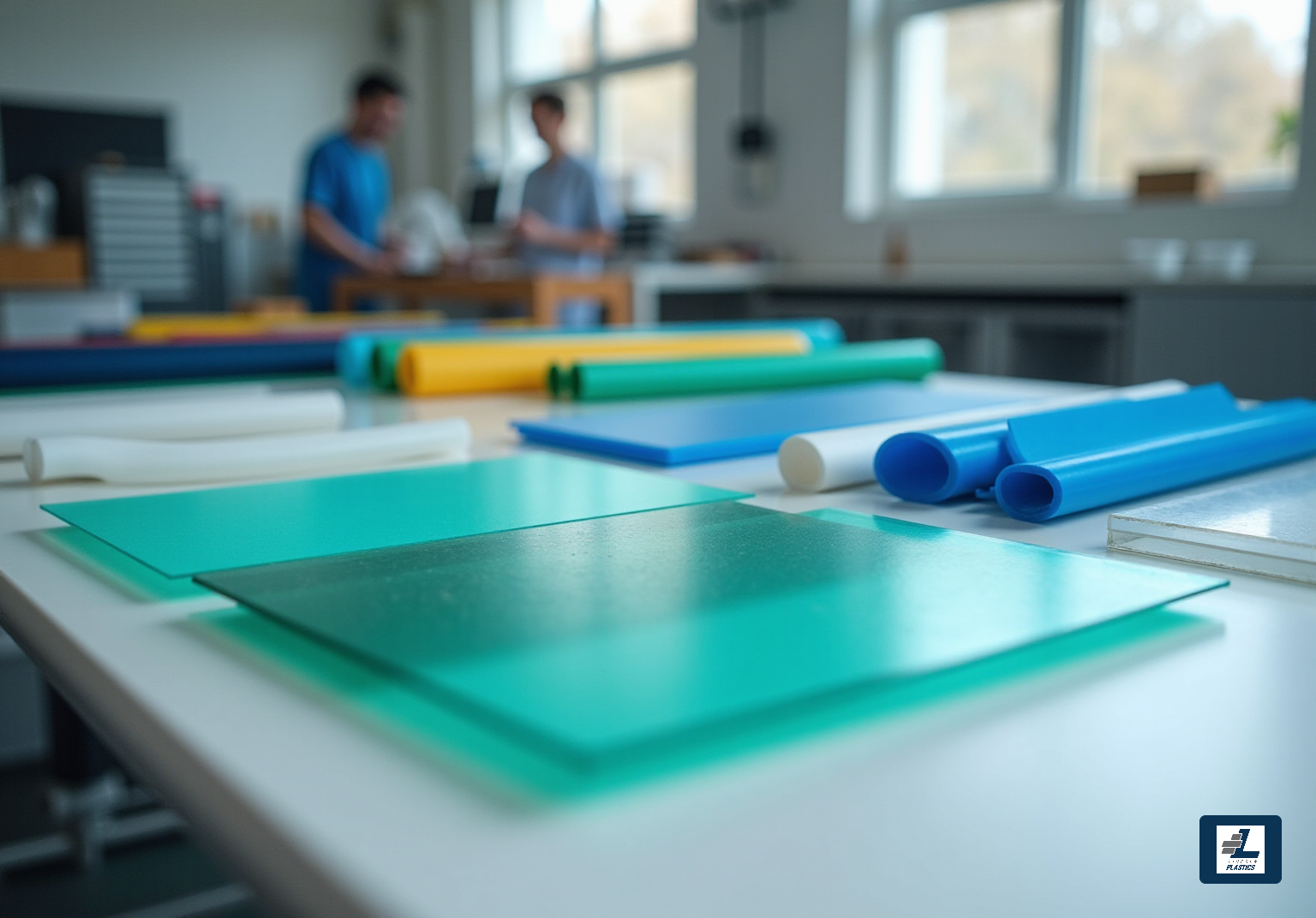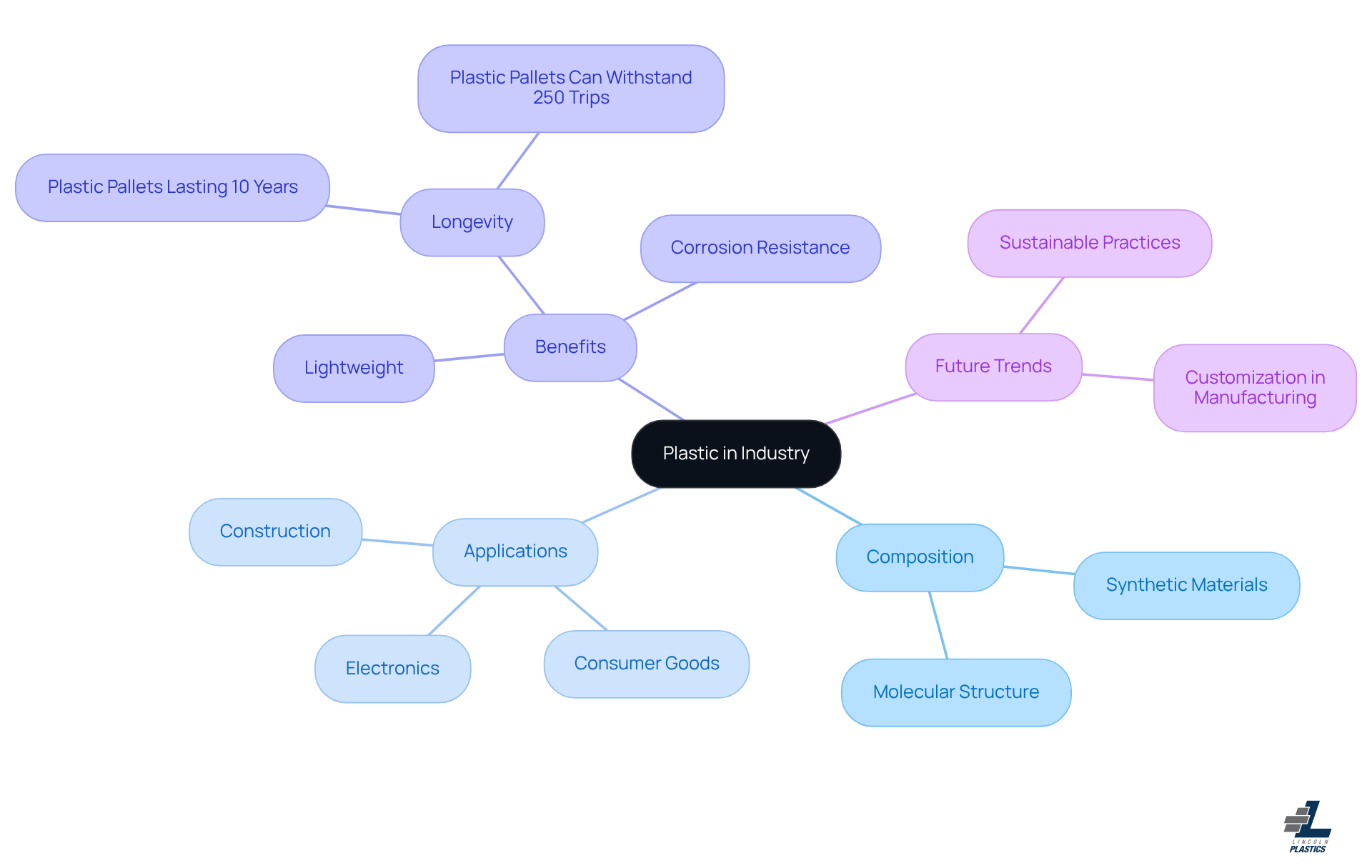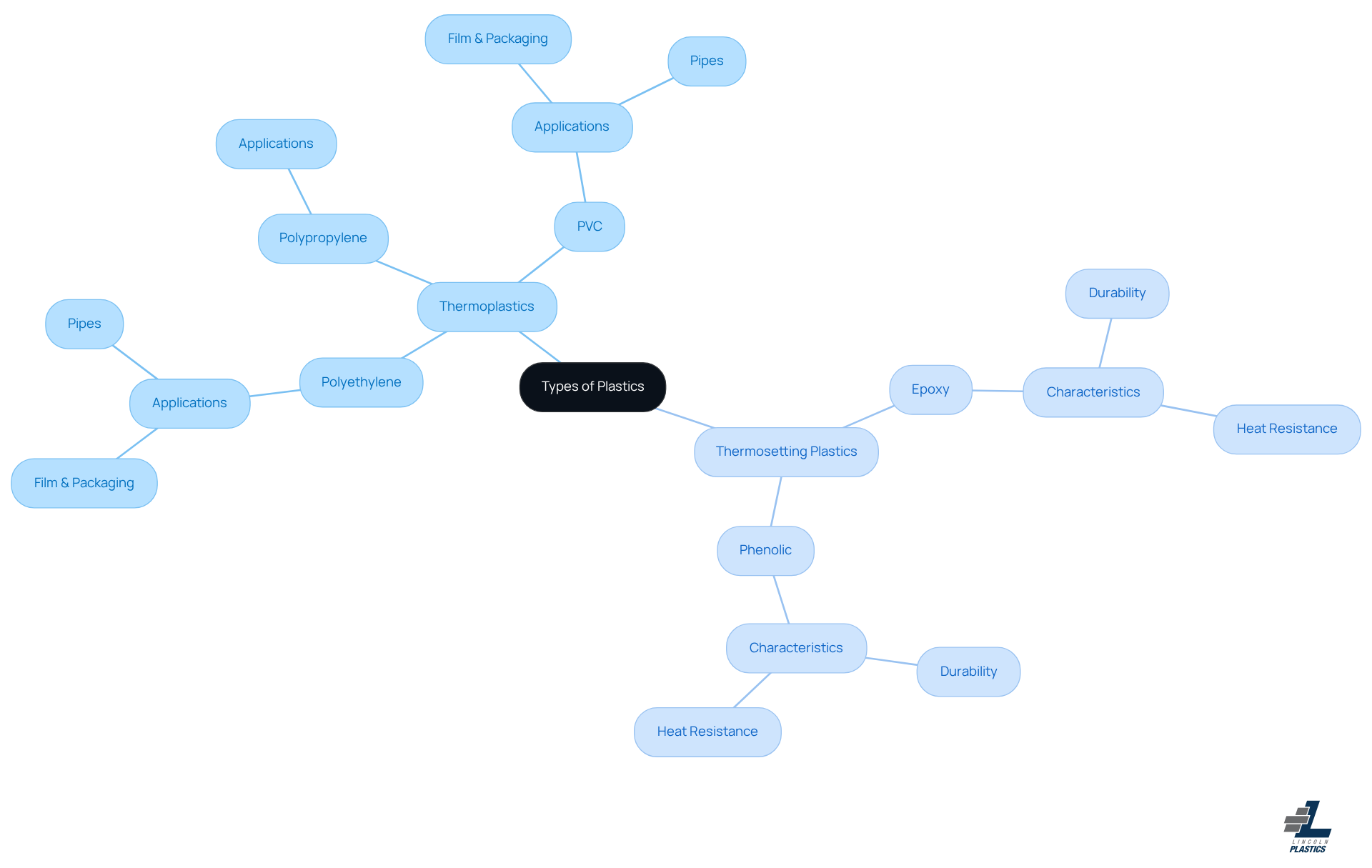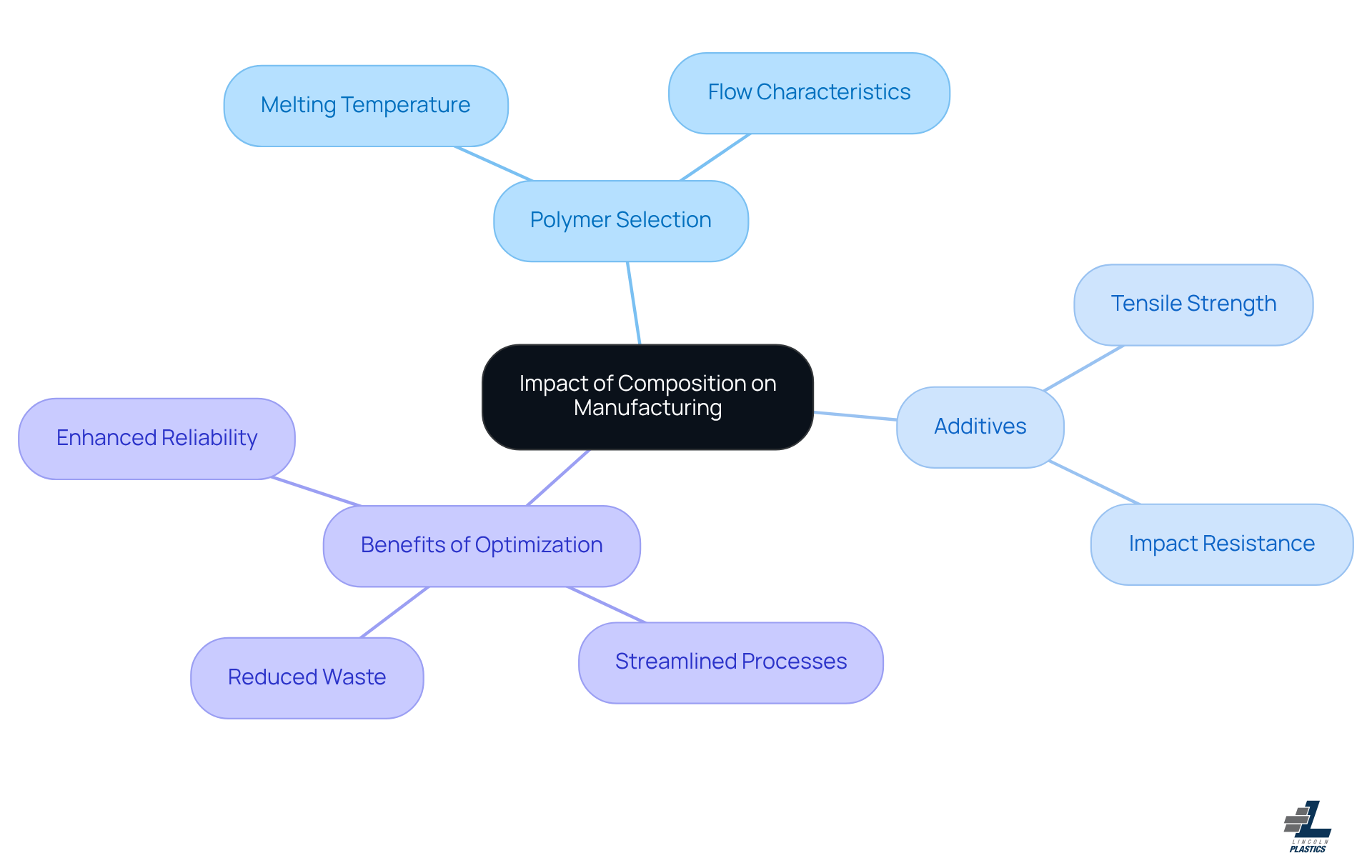
Understand Plastic Composition: Key Insights for OEMs
Overview
Have you ever wondered how understanding plastic composition can really make a difference for Original Equipment Manufacturers (OEMs)? It’s a big deal! Knowing about polymers, additives, and fillers isn’t just for scientists in lab coats; it’s crucial for improving product design and making manufacturing more efficient.
Think about it: when OEMs grasp the ins and outs of plastic materials, they can optimize performance, cut costs, and meet industry standards. This knowledge isn’t just helpful; it’s a game changer that drives innovation and sustainability in the manufacturing process. So, why not dive into this topic and see how it can elevate your work? Let’s explore this together!
Introduction
Understanding the intricate world of plastic composition is super important for Original Equipment Manufacturers (OEMs) trying to navigate the complexities of modern manufacturing. With its amazing versatility and durability, plastic has become a go-to material across various industries, from construction to electronics. So, let’s dive into some essential insights on plastic composition. We’ll explore its classifications, key components, and how these factors can really impact manufacturing performance and quality.
As the industry evolves, you might be wondering: how can OEMs use this knowledge to enhance product design and meet the growing demands for sustainability and efficiency?
Define Plastic: Importance and Applications in Industry
Plastic is everywhere, right? It’s this amazing synthetic material made from long chains of molecules, giving it incredible versatility and durability. That’s why it’s such a popular choice in OEM manufacturing! Understanding the of materials is crucial for designing efficiently, keeping functionality in check, and managing costs effectively.
One of the coolest things about plastic is how it can be molded into all sorts of shapes. This means we can create custom components that fit specific needs perfectly. Think about industries like construction, electronics, and consumer goods—they love synthetic materials with a plastic composition because they’re lightweight and resist corrosion. This really boosts product longevity and performance!
Looking ahead to 2025, the use of synthetic materials in OEM manufacturing is only going to grow. Why? Because advancements are pushing us to focus on efficiency and the plastic composition of sustainable practices. Experts are saying that picking the right material is key to enhancing manufacturing processes and meeting the ever-changing market demands.
So, how do customized synthetic solutions fit into this picture? They can really elevate product design! This ensures that OEMs deliver high-quality, reliable products that meet their clients’ needs. Isn’t it exciting to think about how these materials can transform the industry?

Explore Types of Plastics: Classifications and Characteristics
Plastics can be broadly classified into two categories: thermoplastics and thermosetting plastics. Thermoplastics, like polyethylene, polypropylene, and PVC, can be melted and reshaped multiple times. This makes them perfect for recycling and reprocessing. You’ll find them in applications that need flexibility and durability. For example, low-density polyethylene (LDPE) is often used in film and packaging, while high-density polyethylene (HDPE) is a go-to for pipes and rigid products because of its strength and impact resistance.
Now, let’s talk about thermosetting substances, such as epoxy and phenolic. These materials undergo a chemical change when heated, turning into a hard, inflexible material that can withstand heat and chemicals. This irreversible process boosts their durability, making them ideal for applications that need stability under stress. However, keep in mind that thermosets can’t be melted and recycled, which limits their recyclability. While their are great for tough environments, they might pose challenges in surface finishing and ductility, not to mention poor thermal conductivity for housing replacements.
Understanding these classifications is crucial for OEMs when selecting the right material based on its plastic composition for specific needs. At Lincoln Plastics, we work hand-in-hand with OEMs to make sure their products meet all quality standards, including special checks for ‘fit and function.’ Our solid quality system features a dedicated quality book for your polymer profile, complete with drawings, critical in-process checks, and run documentation. This ensures that the rigid profiles are just what you specified for critical dimensions.
For instance, if durability and thermal resistance are top priorities, thermosetting plastics might be the way to go. But if you’re looking for flexibility and ease of processing, thermoplastics are often the preferred choice. This informed decision-making is key to optimizing product performance and ensuring reliability across various industrial applications. Plus, with over 200 suppliers in both thermoplastics and thermosets, OEMs have a rich market landscape to explore when sourcing materials.

Analyze Plastic Composition: Key Components and Their Roles
When we think about synthetic materials, it’s all about the plastic composition involving a mix of polymers, additives, and fillers. Polymers are like the backbone, giving these materials their strength and durability. But what about the additives? They’re crucial too! Think of plasticizers that make materials more flexible, UV stabilizers that protect against sunlight, and colorants that add a splash of aesthetic appeal.
Now, fillers come into play—like calcium carbonate and glass fibers. They not only boost strength but also help keep production costs down, which is a win-win for everyone involved. For OEMs, understanding the plastic composition of these components is key. Why? Because it allows for the customization of plastic composition to achieve those specific performance targets. This knowledge ensures that the final products not only do their job but also meet industry standards and customer expectations.
At Lincoln Plastics, we take quality seriously. We conduct special checks for '' using various check gauges to ensure our products are top-notch. Plus, we can match colors to your Pantone specifications, which helps maintain consistency across manufacturers. As we look ahead to 2025, the landscape of synthetic material manufacturing is shifting. Making thoughtful choices about these components will be crucial for crafting innovative and sustainable solutions. So, let’s dive in and explore how we can make the most of these materials together!

Evaluate Impact of Composition on Manufacturing: Performance and Quality Considerations
When it comes to manufacturing, the formulation of synthetic materials is super important, especially in extrusion processes. You might not realize it, but the you choose can really impact melting temperatures and flow characteristics. This, in turn, affects how quickly and efficiently you can produce your items. For instance, polymers with lower melting points can actually boost flow rates, leading to faster cycle times and more output.
Now, let’s talk about additives. These little extras can change the mechanical properties of materials—think tensile strength and impact resistance—which are vital for how well the final product performs. OEMs really need to weigh these factors carefully to ensure their material choices meet quality standards and operational needs.
By optimizing the plastic composition, manufacturers can streamline their processes, reduce waste, and enhance product reliability. As the extrusion industry keeps evolving, getting a handle on polymer selection nuances will be key to staying competitive and meeting the increasing demand for high-quality, efficient production. So, what are you waiting for? Dive into the details and make those material choices count!

Conclusion
Understanding the ins and outs of plastic composition is super important for OEMs looking to fine-tune their manufacturing processes and keep up with the ever-changing demands of different industries. This article shines a light on why choosing the right materials matters, highlighting how the makeup of plastics affects product performance, durability, and sustainability. By getting a handle on these concepts, manufacturers can make smart choices that boost their product offerings and operational efficiency.
Let’s dive into some key insights! We discussed how plastics can be classified into thermoplastics and thermosets, each with their own unique properties and uses. We also explored the roles of polymers, additives, and fillers in shaping plastic characteristics, showing just how important it is to customize plastic compositions to hit specific performance targets. Plus, we took a close look at how material choices impact manufacturing processes, like extrusion efficiency and product quality.
As the world of synthetic materials keeps evolving, it’s crucial for OEMs to stay in the loop about the latest trends and advancements in plastic composition. Embracing a proactive approach to material selection can lead to innovative, sustainable solutions that not only meet industry standards but also anticipate future challenges. Remember, the journey toward optimizing plastic use in manufacturing isn’t just about understanding the materials—it’s about using that knowledge to drive progress and enhance the overall quality of products in a competitive market. So, what steps will you take next to elevate your manufacturing game?
Frequently Asked Questions
What is plastic and why is it important in industry?
Plastic is a synthetic material made from long chains of molecules, known for its versatility and durability. Its importance in industry lies in its ability to be molded into various shapes, making it ideal for creating custom components in sectors such as construction, electronics, and consumer goods.
How does plastic benefit OEM manufacturing?
Plastic benefits OEM manufacturing by allowing for lightweight components that resist corrosion, which enhances product longevity and performance. Understanding the plastic composition of materials is crucial for efficient design, functionality, and cost management.
What trends are expected in the use of synthetic materials by 2025?
By 2025, the use of synthetic materials in OEM manufacturing is expected to grow due to advancements that focus on efficiency and sustainable practices. Selecting the right materials is seen as key to improving manufacturing processes and adapting to changing market demands.
How do customized synthetic solutions impact product design?
Customized synthetic solutions elevate product design by enabling OEMs to deliver high-quality, reliable products that meet specific client needs, thus transforming the industry.
List of Sources
- Define Plastic: Importance and Applications in Industry
- 10 Innovative Applications of Co-Extruded Plastics for OEMs (https://lincoln-plastics.com/news-post/10-innovative-applications-of-co-extruded-plastics-for-oe-ms)
- Why Is Plastic Packaging Important ? A Complete Guide (https://packaging-labelling.com/articles/why-is-plastic-packaging-important-a-complete-guide)
- The Advantages of Plastic Pallets | Plastic Moulding Northern Ltd (https://plasticmouldingsnorthern.co.uk/case_studies/the-advantages-of-plastic-pallets)
- case studies | SHINI PLASTICS (https://shini.com/ep_edm/en/contect_212.html/solutions_i_case_studies.html)
- Explore Types of Plastics: Classifications and Characteristics
- Comparison of Thermoset Versus Thermoplastic Materials (https://thomasnet.com/articles/plastics-rubber/thermoset-vs-thermoplastics)
- Analyze Plastic Composition: Key Components and Their Roles
- The Impact of Additives on Plastic Properties (https://europlas.com.vn/en-US/blog-1/the-impact-of-additives-on-plastic-properties)
- Plastic Quotes - 30 quotes on Plastic Science Quotes - Dictionary of Science Quotations and Scientist Quotes (https://todayinsci.com/QuotationsCategories/P_Cat/Plastic-Quotations.htm)
- Understanding the Difference Between Fillers and Plasticizers in Polymers (https://ud-machine.com/blog/what-is-the-difference-between-fillers-and-plasticizers)
- Plastics in the health sector | Health Care Without Harm - Global (https://global.noharm.org/focus/plastics/case_studies)
- Evaluate Impact of Composition on Manufacturing: Performance and Quality Considerations
- 9 Essential Plastic Extrusion Process Steps for OEM Managers (https://lincoln-plastics.com/news-post/9-essential-plastic-extrusion-process-steps-for-oem-managers?dcc2137a_page=15)
- Sustainable Innovations: The Future of Plastics Industry (https://mdplastics.com/the-future-of-plastics-manufacturing-trends-and-innovations-for-2025-and-beyond)
- 13 Motivational Quotes for Design and Manufacturing (https://news.ewmfg.com/blog/13-motivational-quotes-for-manufacturing-and-design)
- The Extrusion Industry in 2025: Innovations, Trends, and Opportunities (https://plextrusions.com/extrusion-blog/the-extrusion-industry-in-2025-innovations-trends-and-opportunities)
- 75 Inspirational Manufacturing Quotes That Will Boost Your Business — Navigate Content (https://navigatecontent.com/blog/inspirational-manufacturing-business-industry-quotes)


